Manipur
Manipur
 |
| Siroi Lily Manipur State Flower |
.jpg) |
| Nongin State bird of Manipur |
 |
| Leimaram falls, bottom, is a local attraction. |
The Meitei represents around 53% of the population of Manipur state, followed by various Naga tribes at 24% and various Kuki / Zomi tribes at 16%. The main language of the state is Meiteilon (also known as Manipuri). Tribals constitute about 41% of the state population (according to 2011 census) and have dialects and cultures that are often village-based. Manipur's ethnic groups practice a variety of religions. According to 2011 census, Hinduism is the major religion in the state, closely followed by Christianity. Other religions include Islam, Sanamahism,(Meitei religion) Buddhism, and Judaism, etc.
After the war, British India moved towards independence, and the princely states which had existed alongside it became responsible for their own external affairs and defence, unless they joined the new India or the new Pakistan. The The Manipur State Constitution of 1947 established a democratic form of government, with the Maharaja continuing as the head of state. Maharaja Bodhchandra was summoned to Shillong, to merge the kingdom into the Union of India. He is believed to have signed the merger agreement under duress. Thereafter, the legislative assembly was dissolved, and in October 1949 Manipur became part of India, It was made a Union Territory in 1956. and a fully-fledged State in 1972 by the North Eastern Areas (Reorganization) Act, 1971.
Manipur had a long record of insurgency and inter-ethnic violence. The first armed opposition group in Manipur, the United National Liberation Front (UNLF), was founded in 1964 and declared that it wanted to gain independence from India and form Manipur as a new country. Over time, many more groups formed in Manipur, each with different goals, and deriving support from diverse ethnic groups in Manipur. In 1977 the People's Revolutionary Party of Kangleipak (PREPAK) was formed, and the People's Liberation Army (PLA), formed in 1978 which Human Rights Watch said had received arms and training from China. In 1980, the Kangleipak Communist Party (KCP) was formed. These groups began a spree of bank robberies and attacks on police officers and government buildings. The state government appealed to the central government in New Delhi for support in combating this violence.
From 1980 to 2004, the Indian government referred to Manipur as a disturbed area. This term (designated by the Ministry of Home Affairs or a State Governor) refers to a territory where extraordinary laws under the Armed forces (Special Powers) Act can be used. The laws allow the military to treat private and public spaces, in the same manner, detain individuals up to 24 hours with unlimited renewals, to perform warrantless searches, and to shoot and kill individuals that break laws, carry weapons, or gather in groups larger than four as well as giving legal immunity to the military. Since 1980, the application of AFSPA has been at the heart of concerns about human rights violations in the region, such as arbitrary killings, torture, cruel, inhuman and degrading treatment, and Forced disappearances . Its continued application has led to numerous protests, notably the longstanding hunger strike by Irom Sharmila Chanu.
In 2004, the government lifted the disturbed status after a violent attack on a local woman. The rape of a Manipuri woman, Thangiam Manorama Devi, by members of the Assam Rifles paramilitary had led to wide protests including a nude protest by the Meira Paibis women association.
 |
| Landscape view of dawn at Senapati Manipur |
- Bishnupur.
- Chandel.
- Churachandpur.
- Imphal East.
- Imphal West.
- 16 Ditricts of Manipur
There are forests of teak, pine, oak uningthou, leihao, bamboo, and cane, Rubber, tea, coffee, orange, and cardemum are grown in hill areas. Rice is a staple food for Manipuri's.
 |
| Teak Tree |
 |
| Manipur Tea State |
 |
| Dzuko valley has temperate climate |
Manipur's climate is largely influenced by the topography of the region. Lying 790 metres above sea level, Manipur is wedged among hills on all sides. This northeastern corner of India enjoys a generally amiable climate, though the winters can be chilly. The maximum temperature in the summer months is 32 °C (90 °F). The coldest month is January, and the warmest July.
The state receives an average annual rainfall of 1,467.5 millimetres (57.78 in) between April and mid-October. Precipitation ranges from light drizzle to heavy downpour. The capital city Imphal receives an annual average of 933 millimetres (36.7 in). Rainfall in this region is caused by The South Westerly Monsoon picking up moisture from the Bay of Bengal and heading towards the Eastern Himalayas ranges. This normal rainfall pattern of Manipur enriches the soil and much of the agrarian activities are dependent on it as well.
Manipur is already experiencing climate changes especially changes in weather, with both increased variability in rain as well as increasingly severe changes in temperature.
Nagas and Kuki/Zo are the major tribe conglomerates. The Nagas in Manipur are further sub-divided into sub-tribes like Anal, Liangmai, Mao, Maram, Maring, Poumai, Rongmei, Tangkhul, Zeme,
Hinduism
The Meitei ethnicity (aka Manipuri people ) is the majority group following Hinduism in Manipur, beside other minor immigrants following the same faith in the state. Among the indigenous communities of Manipur, Meiteis are the only Hindus as no other indigenous ethnic groups follow this faith. According to the 2011 Censes of India, about 41.39% of the Manipuri people practice Hinduism. The Hindu population is heavily concentrated in the Meitei dominant areas of the Manipur Valley (Imphal Valley), among the Meitei people. The districts of Bishnupur, Thoubal, Imphal East, and Imphal West all have Hindu majorities, averaging 67.62% (range 62.27–74.81%) according to the 2011 census data.
Christianity
Christianity is the religion of 41% of the people in the state, but is the majority in rural areas with 53%, and is predominant in the hills. It was brought by Protestant missionaries to Manipur in the 19th century. In the 20th century, a few Christian schools were established, which introduced Western-type education. Christianity is the predominant religion among Tribals of Manipur and tribal Christians make up the vast majority (over 96%) of the Christian population in Manipur.
Islam
Sanamahism
Sanamahism (often referred to as traditional Meitei religion)is the ancient indigenous animistic religion of the Meitei people, the predominant ethnic group of Manipur. Sanamahists worship concentrates on the household deity Lainingthou Sanamahi (often associated as well as confused with direct Sun God Korouhanba ). The ancient Meiteis worshiped a Supreme deity, Salailen, and followed their ancestors. Their ancestor worship and animism was based on Umang Lai- – ethnic governing deities worshiped in the sacred groves.. Some of the traditional Meitei deities (Lais) are Atiya Sidaba, Pakhangba, Sanamahi, Leimaren, Panthoibi, Imoinu, Thangching (Thangjing), Marjing Wangpulen, (Wangbaren) and Koupalu (Kaobru) ). Out of the 233,767 people who opted for the "Other religion" option, 222,315 were Sanamahists.
Other religions
The various other religions were mostly followers of tribal folk religions, 6,444 were Heraka, 2,032 were Jewish and 1,180 were from other tribal religions such as Tingkao Ragwang Chapriak.
The official languages are Meitei and English.
The Meitei language (or Manipuri) is the lingua franca in Manipur and is one of the languages listed in the Eighth Schedule of the Indian Constitution. Manipur has a diverse group of ethnic groups speaking different languages and dialects, practicing Hinduism, Christianity, Sanamahism, Buddhism, Islam, and other folk religions.
Besides Meitei, which is the language of the majority of the people in Manipur, there is a huge amount of linguistic diversity as is the case in most of the Northeast. Almost all of these are Sino-Tibetan languages, with many different subgroups represented. There are multiple Kuki-Chin languages, the largest being Thadou. Another major language family is the Naga Languages. like and Mao. Tangkhul, Poula, Rongmei Less than 5% speak Indo-European languages, mostly Nepali and Bengali, in its Sylheti dialect, which is the major language of Jiribam district
The government of Manipur is a collective assembly of 60 elected members, of which 19 are reserved for Scheduled Tribes and 1 for Scheduled Castes. The state sends two representatives to the Lok Sabha of the Parliament of India. The state sends one representative to the Rajya Sabha. The legislature of the state is Unicameral. Representatives are elected for a five-year term to the state assembly and the Indian parliament through voting, a process overseen by the offices of the Election Commission of India.
The state has one autonomous council.
1. Chamthong or Kangshoi – A healthy vegetable stew - Famous Food of Manipur
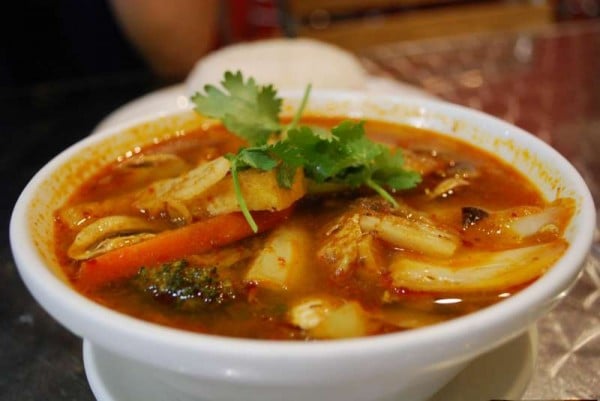
This dish is very popular in Manipur. It is a vegetable stew. It consists of seasonal vegetables that are boiled and flavoured with sliced onions, cloves, salt, garlic, maroi and a bit of ginger. This stew is served with rice or fish and is supposed to be consumed piping hot.
2. Eromba – A delightful combination of boiled vegetables and fish
Here is another favourite dish among the Manipuris. Their cuisine almost always includes a type of fish called Ngari. Eromba is prepared by boiling a tonne of vegetables along with some fermented fish. It is mixed until the texture becomes like a paste. Finally, it is garnished with maroi and a sprinkle of coriander leaves.
3. Morok Metpa – A spicy and delicious chutney
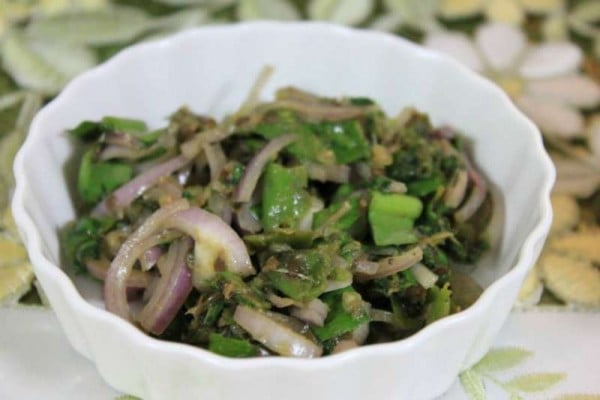
Just like coriander chutney is popular in Mumba city, the Morok Metpa chutney is a hit in Manipur! It is prepared using dried green chilies. The chilies are mashed into a paste and then boiled with some Ngari fish. Once again, it is mashed and then sprinkled with salt. Enjoy it with all kinds of meals.
4. Singju – A Famous Manipuri Salad
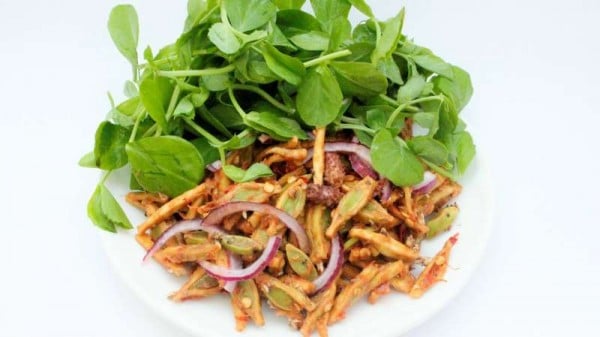
Singju is a type of salad that is bursting with vegetables. It does not contain only a few standard vegetables like tomatoes or onions. Quite to the contrary, it includes cabbage, coriander leaves, onions, ginger, lotus stems, the singju leaf and other similar vegetables. The variations of dish include raw papaya, cabbage, banana flower, lotus root. The Singju is either flavoured with besan, powdered perilla seeds, chilli powder and other herbs.
5. Paaknam
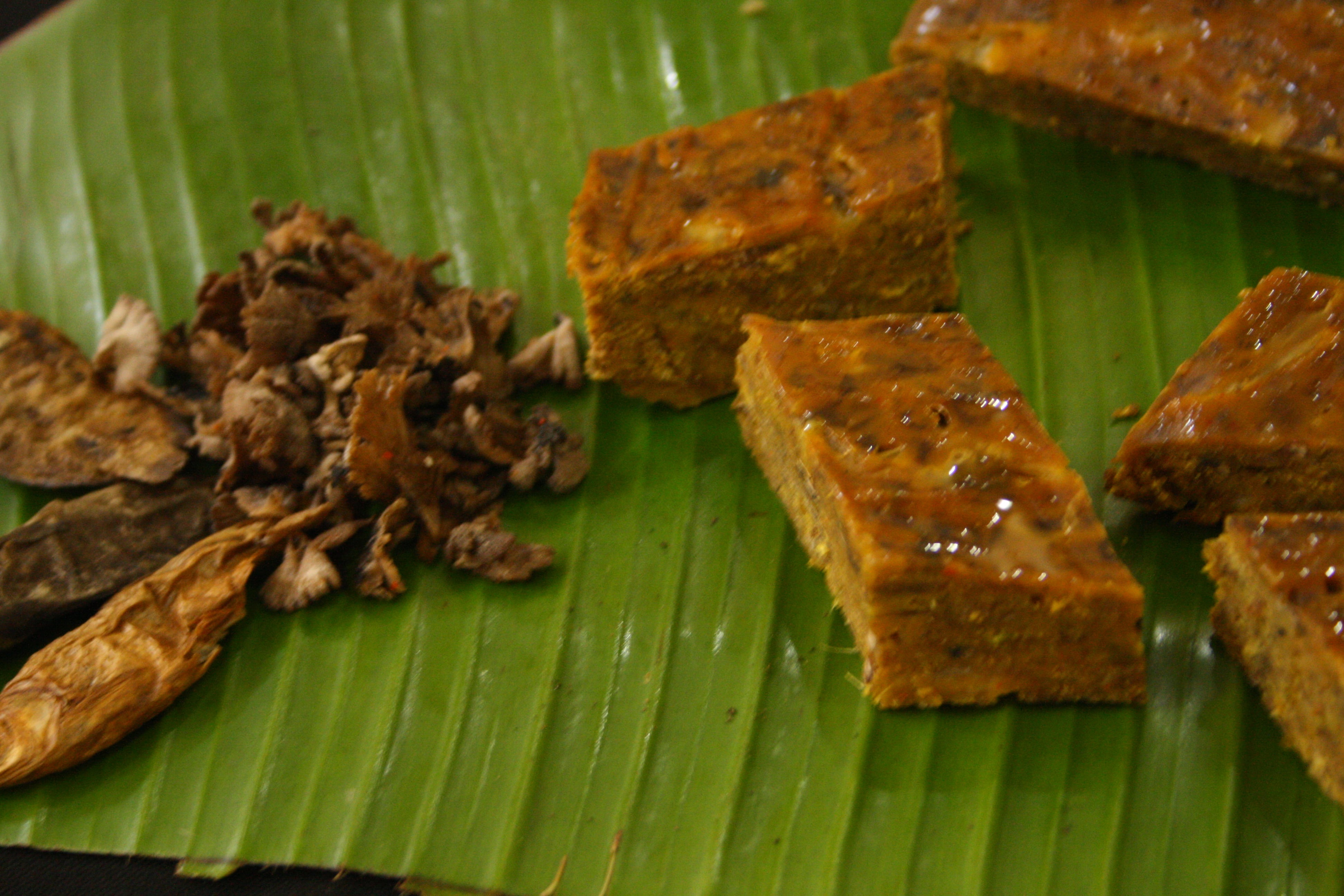
Similar to a pancake, Paaknam is a savoury cake which is prepared from a thick batter of besan, herbs, vegetables and further flavoured with chilli and the traditional Ngari. It is finally wrapped up in a banana leaf and steamed. It is considered to be quite a delicacy and is enjoyed by locals and tourists alike!. It is a perfect dish for evening time snacking!
6. Chak-hao Kheer – The most popular dessert in Manipur
Chak-hao Kheer is a delicious kheer that is prepared on many special occasions in Manipur. It is a pleasing shade of purple and is made using rice, milk and cardamom powder. It is generally garnished with dried fruits like raisins or other nuts. The flavor of this kheer is delicious.
7. Alu Kangmet

Alu kangmet is a very simple dish, usually consumed as a side dish. Boiled potatoes are mashed wonderfully and mixed with fried red chilli, salt and drizzles of mustard oil. This is surely a simple but a wholesome dish.(Alu Chokha type)
 |
| Bamboo, Bamboo is common in Manipur, and an important contributor to its economy as well as cuisine. Above is soibum yendem eromba , a bamboo shoot dish of Manipur. |
 |
| Passion fruit. Passiflora adulis |
 |
| Orange Grove |
 |
| Lemon Tree |
 |
| Peach Nectarine Fruit |
Manipur is home to India's first floating elementary school: Loktak Elementary Floating School in Loktak Lake.
Imphal International Airport is situated in the capital Imphal Imphal which connects direct flights from Imphal Imphal to Kolkata, Guwahati, New Delhi, Bangalore and Agartala.
 |
| Imphal Airport |
Manipur is connected to all its neighbouring states with National Highways.
Currently, Manipur has one operational railway station, Jiribam. Imphal railway station, is an under-construction railway station in Imphal. the capital of Manipur.
Art & Culture
Secular theatre is mostly confined to themes that are not religious; it is performed in the secular or profane spheres. In these are Shumang lila and Phampak lila (stage drama). Shumang lila is very popular. Etymologically Shumang lila is the combination of "Shumang" (courtyard) and "Lila" (play or performance). It is performed in an area of 13×13 ft in the centre of any open space, in a very simple style without a raised stage, set design, or heavy props such as curtains, background scenery, and visual effects. It uses one table and two chairs, kept on one side of the performance space. Its claim as the "theatre of the masses" is underlined by the way it is performed in the middle of an audience that surrounds it, leaving one passage as entrance and exit.
The world of Phampak lila (stage drama) performed in the proscenium theatre is similar, in form, to the Western theatrical model and Indian Natyashastra model though its contents are indigenous. The so-called modern theatre descended on Manipur theatre culture with the performance of Pravas Milan (1902) under the enthusiastic patronage of Sir Churchand Maharaj (1891–1941). The pace of theatrical movement was geared up with the institution of groups such as Manipur Dramatic Union (MDU) (1930), Arian Theatre (1935), Chitrangada Natya Mandir (1936), Society Theatre (1937), Rupmahal (1942), Cosmopolitan Dramatic Union (1968), and the Chorus Repertory Theatre of Ratan Thiyam (1976). These groups started experimenting with types of plays apart from historical and Puranas ones. Today Manipur theatre is well respected because of excellent productions shown in India and abroad. Manipur plays, both Shumang lila and stage lila, have been a regular feature in the annual festival of the National School of Drama, New Delhi.
Iskcon led by Bhaktisvarupa Damodara Swami started a network of schools in Northeastern India, where more than 4,000 students receive education centred on Vaishnava spiritual values. In 1989 he founded "Ranganiketan Manipuri Cultural Arts Troupe", which has approximately 600 performances at over 300 venues in over 15 countries. Ranganiketan (literally "House of Colorful Arts") is a group of more than 20 dancers, musicians, singers, martial artists, choreographers, and craft artisans. Some of them have received international acclaim.
Manipur dance also known as Jagoi is one of the major Indian classical Dance form named after the state of Manipur. It is particularly known for its Hindu Vaishnavism themes, and exquisite performances of love-inspired dance drama of Radha-Krishna called Ras Lila However, the dance is also performed to themes related to Shaivism, Shaktism and regional deities such as Umang Lai during Lai Haraoba The roots of Manipur dance, as with all classical Indian dances, is the ancient Hindu Sanskrit text Natya Shastra, but with influences from the culture fusion between India and Southeast Asia, East Asia, Siberia, Micronesia and Polynesia.
The auditorium of the theatre is on the outskirts of Imphal and the campus stretches for about 2 acres (8,100 m2). It has housing and working quarters to accommodate self-sufficiency of life. The theatre association has churned out internationally acclaimed plays like Chakravyuha and Uttarpriyadashi. Its 25 years of existence in theatre had disciplined its performers to a world of excellence. Chakravyuha taken from the Mahabharat epic had won Fringe Firsts Award, 1987 at the Edinburgh International Theater Festival. Chakravyuha deals with the story of Abhimanyu (son of Arjun) of his last battle and approaching death, whereas Uttarpriyadashi is an 80-minute exposition of Emperor Ashoka's redemption.
 |
| Amur Falcon |
Manipur to celebrate Amur Falcon Festival in Tamenglong district headquarters, 150 km west of Imphal on Nov: The Amur falcon (Falco amurensis) is the world’s longest travelling small raptors of the falcon family. Amur falcons migrate to their wintering grounds in South Africa, usually arriving in large numbers during October in Nagaland and Manipur besides other places in the northeast India undertaking a yearly journey of about 20,000 km. They leave the region in November after having enough food for their non-stop flight to Africa where they spend their winters.
.jpg) |
Mukna Kangjei (Cane stick).jpg) |
Mukna is a popular form of wrestling. Mukna Kangjei, or Khong Kangjei, is a game which combines the arts of Mukna (wrestling hockey) and Kangjei (Cane Stick) to play the ball made of seasoned bamboo roots.
.jpg) |
| Yubi Lakpi/ Coconut snatching |
The game is traditionally associated with autochthonous forms of Hinduism. It is said to have started as a ceremonial re-enactment of the celestial snatching of the pot of nectar after the Samundra Manthan An official game is held on the occasion of the Yaoshang Festival of Shri Shri Govindajee at palace ground and with Royal presence.
Unlike rugby it is an individual sport, not a team one. Before the start of the game, players rub their bodies with mustard oil and water to make slippery to catch each other. A coconut properly soaked with oil is place in front of the chief guest of the function, known as the "King", who does not take part in the game itself. Before the start the coconut is placed in front of the seat of the "King
- Dress - players are generally barefoot, and wear shorts (a kisi/langot), but not shirts.
- Umpire - The umpire is a senior jatra, who starts the game, and stops fouls.
- Pitch - usually approximately 45 metres long, by eighteen wide, without grass. One side of the pitch forms the central portion of the goal line. It is frequently played on rough, dried mud. Alternatively it can be played on turf.
- Scoring - a player has to approach the goal from the front with his oiled coconut and pass the goal line. The coconut is later offered to the "King".
- Carrying - players are not allowed to hold the coconut against their chest, but have to carry it under their arm.
- Fouling and tackling - Players are not allowed to kick or punch opponents, or to tackle players who do not have the coconut.
Each side has 7 players in a field that is about 45 x 18 metres in area. One end of the field has a rectangular box 4.5 x 3 metres. One side of which forms the central portion of the goal line. To score a goal a player has to approach the goal from the front with his oiled coconut and pass the goal line. The coconut serves the purpose of a ball and is offered to the king or the judges who sit just beyond the goal line. However, in ancient times the teams were not equally matched but the players, with the coconut had to tackle all the rest of the players.
Royal Association
Yubi lakpi is a traditional full contact game played in Manipur, India, using a coconut, which has some notable similarities to rugby. Yubi lakpi literally means "coconut snatching". The coconut is greased to make it slippery. There are rules of the game, as with all Manipur sports. The coconut serves the purpose of a ball and is offered to the king, the chief guest or the judges before the game begins. The aim is to run while carrying the greased coconut and physically cross over the goal line, while the other team tackles and blocks any such attempt as well as tries to grab the coconut and score on its own. In Manipur's long history, Yubi lakpi was the annual official game, attended by the king, over the Hindu festival of Shree Govindajee. It is like the game of rugby or American football.
Oolaobi (Woo-Laobi) is an outdoor game mainly played by females. Meitei mythology believes that UmangLai Heloi-Taret (seven deities–seven fairies) played this game on the Courtyard of the temple of Umang Lai Lairembi. The number of participants is not fixed but are divided into two groups (size as per agreement). Players are divided as into Raiders (Attackers) or Defenders (Avoiders). Hiyang Tannaba, also called Hi Yangba Tanaba, is a traditional boat rowing race and festivity of the Panas
Captain Robert Stewart and Lieutenant Joseph Sherer of the British colonial era first watched locals play a rules-based pulu or sagolkangjei (literally, horse and stick) game in 1859. They adopted its rules, calling the game polo, and playing it on their horses. The game spread among the British in Calcutta and then to England.
Apart from these games, some outdoor children's games are fading in popularity. Some games such as Khutlokpi, Phibul Thomba, and Chaphu Thugaibi remain very popular elsewhere, such as in Cambodia. They are played especially during the Khmer New Year.
First of its kind in India, National Sports University will be constructed in Manipur.
Festivals
The festivals of Manipur are Lui-ngai-ni Ningol Chakouba, Shirui Lily festival, Yaoshang, Gan-ngai, Chumpha, Cheiraoba, Kang and Heikru Hidongba, as well as the broader religious festivals Eid-Ul-Fitr, Eid-Ul-Adha and Christmas. Most of these festivals are celebrated on the basis of the lunar calendar. Almost every festival celebrated in other states of India is observed.
On 21 November 2017, the Sangai Festival 2017 was inaugurated by President Ram Nath Kovind in Manipur. Held for 10 days, the festival is named after Manipur's state animal, the brow-antlered Sangai deer. The Sangai Festival showcases the tourism potential of Manipur in the field of arts and culture, handloom, handicrafts, indigenous sports, cuisine, music and adventure sports.
Ningol Chakouba
Held on 9 November,[122] this is a social festival of the Meiteis, the Pangal, Meitei Christians and many communities of Manipur where married women (Ningol) are invited (Chakouba, literally calling to a meal; for dinner or lunch) to a feast at their parental house accompanied by their children. Besides the feast, gifts are given to the women/invitees and to their children. It is the festival that binds and revives the family relations between the women married away and the parental family. Nowadays, other communities have started celebrating this kind of a family-bonding festival.
Kut
Held after the Harvest festival in November,[123][124] this festival predominantly celebrated by Kuki-Chin-Mizo tribes in Manipur has become one of the leading festivals of the state. Kut is not restricted to a community or tribe — the whole state populace participates in merriment. On 1 November of every year, the state declared holiday for Kut celebration.
Yaosang
Held in February or March,[125] Yaosang is considered to be one of the biggest festivals of Manipur. It is the Holi festival (festival of colour) but Yaosang is the regional name given by the people of Manipur.
Khuado Pawi
Khuado Pawi is the harvest festival of the Tedim people who were recognised as Sukte and Zomi in India and Myanmar respectively. The word Pawi means festival in Tedim Zomi language. It is celebrated every year in the month of September–October after harvesting.[126]
Cheiraoba
Also known as Sajibugi Nongma Panba and held in March or April, Cheiraoba is the new year of Manipur.[117] It is observed on the first lunar day of the lunar month Sajibu (March/April) and so it is also popularly known as Sajibu Cheiraoba. People of Manipur immaculate and decorate their houses and make a sumptuous variety of dishes to feast upon after offering food to the deity on this day. After the feast, as a part of the ritual, people climb hilltops; in the belief that it would excel them to greater heights in their worldly life.[117]
Gaan-Ngai
Gaan-Ngai is the greatest festival of the Zeliangrong people. It is a five-day festival and is usually performed on the 13th day of the Meitei month of Wakching.
Imphal (capital)
 |
| Leima Shopping Plaza Imphal |
 |
| The Khuman Lampak Sports Complex |
 |
| Velodrome |
 |
| Shree Govindajee Temple Imphal |
Lakes and islands
48 km (30 mi) from Imphal, lies the largest fresh water lake in northeast India, the Loktak Lake, a miniature inland sea. There is a tourist bungalow atop Sendra Island. Life on the lake includes small islands that are floating weed on which live the lake people, the blue waters of the lake, and colourful water plants. There is a Sendra tourist home with an attached cafeteria in the middle of the lake. Floating islands are made out of the tangle of watery weeds and other plants. The wetland is swampy and is favourable for a number of species. It is in the district of Bishnupur. The etymology of Loktak is "lok = stream / tak = the end" (End of the Streams).[55] Sendra park and resort is opening on the top of Sendra hills and attracting the tourist.
 |
| Largest fresh water lake in North East |
A must do if one is in Imphal. This is the only legitimate place near Imphal where rice wine is made in most households. One can go inside the houses of the friendly locals and observe the entire process. At the end of the visit one can pick up liquor.
Kaina is a hillock about 921 metres (3,022 ft) above sea level. It is a sacred place for Manipuri Hindus. The legend is that, Shri Govindajee appeared in the dream of his devotee, Shri Jai Singh Maharaja, and asked the saintly king to install in a temple, an image of Shri Govindajee. It was to be carved out of a Jack fruit tree, which was then growing at Kaina. It is 29 km (18 mi) from Imphal. The Dzuko Valley is in Senapati district bordering with Kohima. There are seasonal flowers and number of flora and fauna. It is at an altitude of 2,438 metres (7,999 ft) above sea level, behind Mount Japfu in Nagaland. The rare Dzüko lily is found only in this valley.
 |
| Dzuko lily |
Sadu Chiru waterfall is near Ichum Keirap village 27 km (17 mi) from Imphal, in the Sadar hill area, Senapati district. This consists of three falls with the first fall about 30 metres (98 ft) high. Agape Park is in the vicinity.
 |
| Circular floating Swamps Phumdis these days, these are also being created artificially for fishing. |
There are many other floating islands on the lake that are a source of sustenance for the nearby fishing villages. However, in recent times, the lake has been undergoing shrinkage due to thoughtless human encroachment although the government is taking measures to preserve and protect these treasures in the ecosystem.
Location: Bishnupur district, Imphal
Timing: 8:00 AM – 6:00 PM
Covering an area of 300 square metres, the lake is a lifeline for many people. It serves as a source of water for hydropower generation, irrigation and drinking water supply in the region, other than being the source of income for many fishermen who largely depend on it. Children of the fishermen can even be seen playing and running around on these phumdis.

.jpg) |
| Waterfowl species of Loktak Ramsar |
.jpg) |
| Collecting fish from Athaphum or fish ring Manipur |
The highest mud dam in the world is the Singda Dam. But car is not allowed inside the dam unless you requested for. Walking will be little bit straineous as you have to climbed up. Once you reached the top of the dam, you will be gifted with magnificent natural beauty of Manipur Valley and water lake.
The water in the dam-created lake is quiet and peaceful, evoking a sense of calmness within. The dam, which is 920 meters above sea level and overlooks a gorgeous lake, is a multipurpose irrigation project.
Location: Imphal, Manipur\
We visited it in the evening in the golden light of the setting sun as the rays lit up the domes and the sound of prayer surrounded us.....
Advised not to have breakfast on the day. You have to book the Bhojan Prasad in advance by paying Rs 120 each. You will not find such food anywhere else.
There is local food also served there. Witnessed the Sandhya Arati and the Sankirtan! situated next to the royal palace. It has an unique architecture with domes on top which is not common elsewhere. It painted with white exudes a feeling of purity and peace. It has a large complex with the temple and a big hall , may be for functions. It is considered a sacred place by the Hindus.
Idols are extremely beautiful. Lord Krishna is seen with His disciples in this temple.
This place is the usp of manipur. Lovely beautiful landscaping They also have karts at reasonable prices for going around this vast area inside the main gates. Also present is a memorabilia shop.
Highly recommended!!
Do not miss the Fort for anything.
This fort in the downtown of Imphal city is sorrounded by moats with water from the Imphal river. It’s a large area with big trees and well maintained lawns.
The entire valley spans across an expansive area of 1843 sq km, almost one tenth of the total area of the state of Manipur. Visitors here bundle up this trip with their tour of the southern part of this valley which is home to several lakes and swamps. The Imphal Valley has several attractions, both natural and manmade, like the Palace of Kangla, the Polo Ground and the Manipur State Museum.
.jpg) |
| Iris |
This rare flower is the recipient of several prestigious awards including one by the Royal Horticultural Society, when it was presented at one of their flower shows held in London. Besides the Shirui Lily, these mountains are graced by thousands of other varieties of flowers like orchids, rhododendrons like horamwon, sirawon, shirungwon, khongwon, phanwon, tipkhawon and other natural herbs.
Location: North of Ukhrul in Ukhrul district
The locals came up to assist in establishing this park in order to conserve the environment and encourage rational use of natural resources. Andro residents first constructed a reservoir in the foothills, then developed the Santhei Natural Park around it. An artificial dam has been built here to provide public water while also adding to the natural beauty of the area.
Location: Kharam Leikai, Andro, Manipur
Timing: 6.00 AM - 6.00 PM
.jpg) |
| Sangai Dancing deer of Manipur. it has a habit of waiting and looking back at viewers |
 |
| Eld's Deer. Thamin. Brow Antlered Deer |
 |
| Sangai,this animals are beautiful for their horns and gentleness |
You can't just walking! Ensure that you reach the national park in the early hours of the day because it's situated in a cut off area from the main city (Moirang is the nearest town) and is prone to infiltration activities.
The forest officials will guide you inside the national park. Pls carry a set of binoculars because you will not be able to see the famous dancing deer "Sangai" from close distance. They are very shy in nature and can be viewed from specific view points.
Entrance fee Rs.300 per person, Car Rs.100, Camera Rs.50 per still camera...
In one part of Loktak Lake is the Keibul Lamjoa National Park. This little visited park is unusual because it consists of over 40 square kilometres of floating vegetation. The vegetation forms a mat about a metre thick which bounces as you walk on it. Its main claim to fame is that it is the last natural home of the rare Sangai deer, the national animal of Manipur. There is a hilltop viewpoint overlooking the vegetation, and from it we were lucky enough to see three of the deer, one of which stayed in full view for a good 10 minutes and was close enough to see all its features with binoculars. We also saw a wild boar in the distance. We were told the best time to see the deer is in early morning, so we did well as we were there in late morning. We also took a short boat ride through the vegetation. This was worth doing to see it close up and to have a chance to stand on it. Overall we'd rate this National Park as 5*.
If you are a wildlife enthusiast, this is a place you must visit to get a close view of this unique creature amid its natural surroundings and wetland ecosystem. You can also catch a glimpse of other wildlife here including the hog deer, otter, huge numbers of water fowls as well as rare migratory birds which fly here during the months of November through March.
Location: Keibul Lamjao Rd, Manipur
Timing: 7:30 AM to 5:30 PM
Natural caves
Thalon Cave (around 910 metres (2,990 ft) above sea level) is one of the historical sites of Manipur under Tamenglong district. It is around 185 kilometres (115 mi) from the state capital and around 30 kilometres (19 mi) from Tamenglong district headquarters in north side. From Thalon village, this cave is 4–5 kilometres (2.5–3.1 mi). Khangkhui Cave is a natural limestone cave in Ukhrul district. The big hall in the cave is the darbar hall of the Devil King living deep inside while the northern hall is the royal bedroom, according to local folklore. During World War II, villagers sought shelter here. This cave is an hour's trek from Khangkui village.
The approaching road is too damaged and travelling on these roads is too tiresome therefore the enjoyment generally gets lost on the roads.
Its a day trip start from Ukhrul at 7 am and one can reach back by 4
How to Reach : Around 40 kms drive from Ukhrul on a built up road via Finch Corner and Shanshak takes you to a point from where there is another 3-4 Kms off road drive (which may need a 4*4 capable vehicle if going in rainy season). this off road drive takes you to the village car stop. From there its a 2 Km trek through a jungle track to reach up to the Caves.
Do start early in the morning since it does get pretty hot and humid during the trek.
The Caves : the 1st cave has an easy access and has good room inside. has peculiar stalactites and stalagmites growing.one can fell the wet Limestone and its smell.
the 2nd cave has a steep downward slope and is entered through a small opening a top its roof using a rope if you are carrying one. (avoid entering in rainy season)
the 3 rd Cave gives the most exciting experience.it has a small windowed entrance. one has to literally be on all fours to negotiate its turns inside. it gives the real feel of entering a real treacherous cave. pitch dark inside, with narrow bends, water running along its roof. it took us 20-25 minutes inside this cave to reach a point where the cave bifurcated into two narrow and shallow lanes.
the 4 th cave is huge hallway kind of structure and is the roomiest of all.
the 5 th cave is located some distance 100 mts away from the others and is akin to the 2nd cave but doesn't go as deep as the 2nd one
it is a less visited place so the chances are you might be the only ones traveling on the day. some local nepali people go there for worshiping considering the stalagmites as symbolic of lord Ganesha
There is paucity of directions throughout this path so one must seek help of locals regarding the route.
Also dress light as one would for a trek.
Carry ample drinking water and some snacks since after there is just one shop at the roadhead. leaving which the coming and going back upto the road head takes 3 to 4 hrs
Carry bright torch and flashlights.
Most importantly while in Manipur travel Safe.
Apart from hordes of regular tourists, these caves attract researchers and archaeologists from all over the country as well as outside it. When visiting inside the cave, you can spot huge sediments of limestone formations, some of which hang from the ceiling while others grow from the ground. The mystical cave comprises five tunnels and two large chambers which give a unique mystical experience to visitors.
Location: 3C34+5VG, Khangkhui Khullen Ukhrul district
Timing: 5:00 AM – 5:00 PM
Situated in the Hallui Hills, tourists visit here for a guided tour of the estate, as well get an insight into the process of making tea. You will see the process of hand plucking tea leaves which are then sun dried and put through a natural process by locals. The unique aspect about the green tea here is that you can only taste its authentic flavor after it is boiled twice.
Location: 58HV+8QM, Hallui, Manipur
Timing: 7:00 AM – 5:00 PM
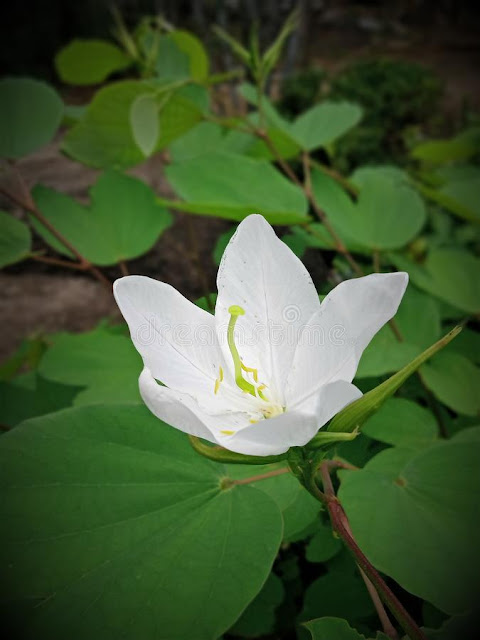 |
| Kanchan Flower on wet rocks . Snowy Orchid |
Located at an altitude of 3,114 m above sea level, the peak makes for an interesting vantage point to catch a kaleidoscopic view of the entire region that comprises lofty mountains, undulating valleys, meandering streams and vibrant hamlets. Trekkers find the climb uphill to the Khayang peak highly interesting for the beautiful scenery around.
Location: Ukhrul district, Manipur. There are several famous attractions in Manipur and its Ukhrul area offers some of the most picturesque ones including the Khayang Peak. The exceptional landscapes here offer stunning views which will leave you mesmerized. There are also several outdoor adventure sports on offer here which makes it a great attraction for thrill seekers.
Located at an altitude of 3,114 m above sea level, the peak makes for an interesting vantage point to catch a kaleidoscopic view of the entire region that comprises lofty mountains, undulating valleys, meandering streams and vibrant hamlets. Trekkers find the climb uphill to the Khayang peak highly interesting for the beautiful scenery around.
Location: Ukhrul district, Manipur
Sadu Chiru waterfall is near Ichum Keirap village 27 km (17 mi) from Imphal, in the Sadar hill area, Senapati district. This consists of three falls with the first fall about 30 metres (98 ft) high. Agape Park is in the vicinity.
.jpg) |
| Leimaram falls is a local attraction. |

Mrs. Hume's pheasant (Syrmaticus humiae) Meitei Nongin; literally, "one who follows the track of rain" also known as Hume's pheasant or the bar-tailed pheasant, is a large, up to 90 cm long, forest pheasant with a greyish brown head, bare red facial skin, chestnut brown plumage, yellowish bills, brownish orange iris, white wingbars and metallic blue neck feathers. The male has a long greyish white, barred black and brown tail. The female is a chestnut brown bird with whitish throat, buff color belly and white-tipped tail. E.
This rare and little known pheasant is found throughout forested habitats of the Mizoram, Patkai, Range, Yunnan and northern parts of Myanmar and Thailand. The diet consists mainly of vegetation matters. The female lays three to twelve creamy white eggs in nest of leaves, twigs and feathers.
Owing to ongoing habitat loss, fragmented population and being hunted for food, the Mrs. Hume's pheasant is evaluated as Near Threatened on the of IUCN Red list Threatened Species. It is listed on Appendix I of CITIES.
Reaching the Sadu Chiru falls also makes for a stunning experience in itself as you cross scenic fields, forests, streams and then make your way up the rugged stone steps for a spectacular view of the verdant surrounding valleys.
All that effort to reach the waterfall after taking a 20 km detour, will certainly be worth your while when you get a misty glimpse of the milky white water through thick forest and foliage.
Location: Sadu Chiru Waterfall Road, Manipur
Timing: 9:00 AM – 4:00 PM
This temple of Lord Sanamahi is NOT at Kangla Fort but is in First Manipur Rifles' Ground. Of course not many people know about it. This time, I met a knowledgeable Art and Culture Department official who took me there.
This is a beautiful 1875 Temple and I was told that statue of Lord Sanamahi is about 500 years old. Temple is beautiful. I could take a few photographs of the Lord, his consort and the Temple.
The structure is completely made of brick and stands on an octagonal base with a flight of stairs on the south side that lead to the temple’s doorway. The roof is made in a pyramidal gothic style architecture and the façade is ornamented with an elaborate door. During the yearly Manipur Cheiraoba festival, the place comes alive with vibrant cultural shows.
Location: Jiribam, Manipur
Timing: 6:00 AM – 8:00 PM
The zoological garden is bestowed with rich biodiversity and the opulence of its flora and fauna attract nature and wildlife fans from all across. The animal section of the park has around 420 different species housed here and there are almost 55 species of birds as well.
Location: Lamphelpat, Imphal
Timing: 10 AM – 4:30 PM
The temple building is possibly the most beautiful structure in the area. In front of the coronation halls of the former kings, Uttara, there stand two large white statues of Kangla Sha. This is a mythical animal from the Manipuri folklore, and the structure commemorates the original ones erected with brick and wood that were razed down by the British when they occupied the fort.
Location: Central Manipur
Timing: 7AM – 5PM
There is a play area in one section of a garden for children to enjoy while you have a picnic or simply stretch your legs after all the traveling and sightseeing. There is a restaurant in the garden premises that serves sumptuous meals and shops that sell saplings/flower plants at reasonable prices.
Location: Haorang Sabol, Manipur
Timing: 9:00 AM – 6:00 PM
The lake is situated towards the north of the district, the prime source being the drained water that comes from the Waithou Hill and the several paddy fields on the western and eastern sides.
The lake lies at a distance of 16 km from Imphal along the Imphal-Myanmar Road. It is surrounded by pineapple farms around the edges which are quite a sight and are extremely famous in the area. Before the construction of the Cheksabi barrage in the 1970s, Waithou Lake was a breeding ground for the Ngaton fist, an endangered species which completely vanished from the area after that.
Location: Imphal Myanmar Road, Manipur
Timing: 9:00 AM – 5:00 PM
Once on top, you can catch panoramic views of the entire city of Imphal as you enjoy delectable sugarcane juice and sumptuous breakfast at the many street-side shacks set up here. There is a children’s play area right before you reach the summit. The Lal Chai or red tea is an excellent way to end a well spent day here.
Location: Central Manipur
Timing: 6:00 AM – 8:00 PM
The Battle of Khongjom was possibly the greatest war the Manipuris fought against the British and the Khongjom War Memorial Complex has been built in commemoration of the brave Manipuri soldiers who lost their lives in the war. This historical attraction is located at a distance of about 33 km from Imphal and draws all history lovers to it as it relays the grueling fight fought in 1891.
Khongjom Day is celebrated every year on 23rd April in remembrance of the brave soldiers. The memorial is particularly dedicated to Major General Paona Brajabashi who sacrificed his life serving his motherland. It is also a popular sightseeing destination with its 30 feet high entrance and surrounding greenery.
Location: Lamding Mamang Leikai, Thoubal
Timing: 7:00 AM – 7:30 PM
The museum also replicates the various styles of houses common to individual tribes like the kabui, poumai, kuki, Meitei and tangkhul. From wooden carvings and paintings to dolls representing each of the 34 Manipuri tribes, give deeper insight into the state’s rich cultural heritage.
Location: Andro Village, Manipur
- 1. Senapati: Get a cultural insight at this simple yet intriguing hideout and one of the best places to visit in Manipur. Covered with dense forests dotted by hamlets, this is a great escape from the bustle of city life.
2. Andro: Spend a fulfilling day with your family exploring this scenic village famous for its pottery craftsmanship that makes it one of the most spectacular Manipur tourist places indeed.
3. Imphal: Located in the heart of Manipur, the capital city Manipur one of the most notable places to visit in Manipur with family. There are umpteen landmarks here like Manipur State Museum, Palace of Kangle and Polo Ground.
4. Khongjom: One of the best Manipur tourist places, Khongjom is a must-visit to remember the brave soldiers who fought in the Anglo-Manipur War.
5. Ukhrul: The scenic splendor of Manipur can be seen encapsulated in this tiny district where you can find peace of mind and spirituality. What are the things to do in Manipur?
1. Visit the Keibul Lamjao National Park: Spot unique species of animals and birds in the spectacular biodiversity of this national park. This unique park tagged as the only ‘floating national park’ is one of the best Manipur tourist places to visit.
2. Go shopping in the Moreh-Tamu International Market: Situated on the Indo-Myanmar border, this interesting market is outfitted with quaint eateries, shops selling organic vegetables and some unique pieces of handcrafted jewelry.
3. Go boating at Loktak Lake: This widely visited one of a kind attraction comprises several small islands and phumdis. You can explore these tiny locales by boat and experience unparalleled peace amid spectacular mountains in the backdrop.
4. Go bird watching at Tamenglong: Popularly known as the land of the hornbill, Tamenglong is a place that is frequented by some of the rarest species of birds. Delight in the amazing mix of waterfalls, meadows, lakes, spices and rare herbs.What is Manipur famous for?
Manipur is bestowed with immense beauty by Mother Nature and is covered in lush greenery. It is famous for its stunning mountains, such as Tenipu and Laikot. It is also famous for its lakes, waterfalls, wildlife reserves, gardens and parks. Apart from scenic landscapes, the state is also blessed with rich culture, traditions, deep-rooted history and some delectable local cuisines.What is the best time to visit Manipur?
The best time to visit Manipur is between the months of September and April when the weather is most pleasant. November to February comprises the winter season here when the temperatures remain quite chilly yet cozy. The environment remains laid back with the warm winter afternoon sun when sightseeing and other expeditions can be thoroughly enjoyed.
 |
| Manipur Dance |
 |
| Thang Ta , the martial art form of Manipur |
 |
| Pena is an ancient Manipur musical instrument, particularly popular among the Meitei, the Pangal and the Meitei Christians |
 |
| The Chorus Repertory Theatre, Imphal, founded by Ratan Thiyam |
 |
| The Shrine – the main theatre |
 |
| The Lai Haraoba, a dance festival showcases the folk dances of Manipur. |


.jpeg)


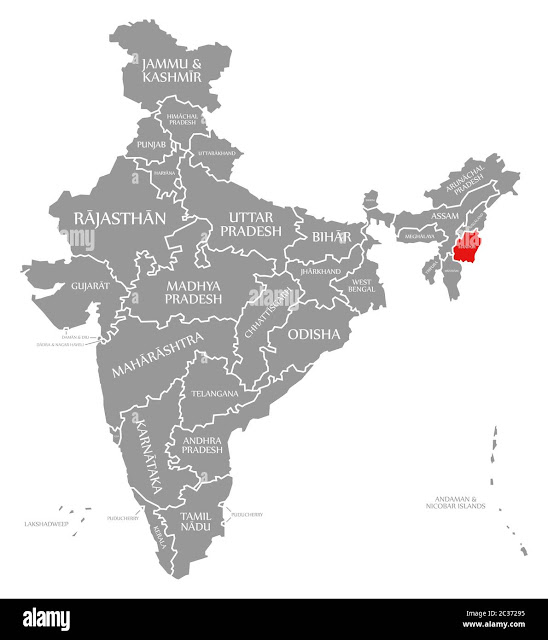











.jpg)









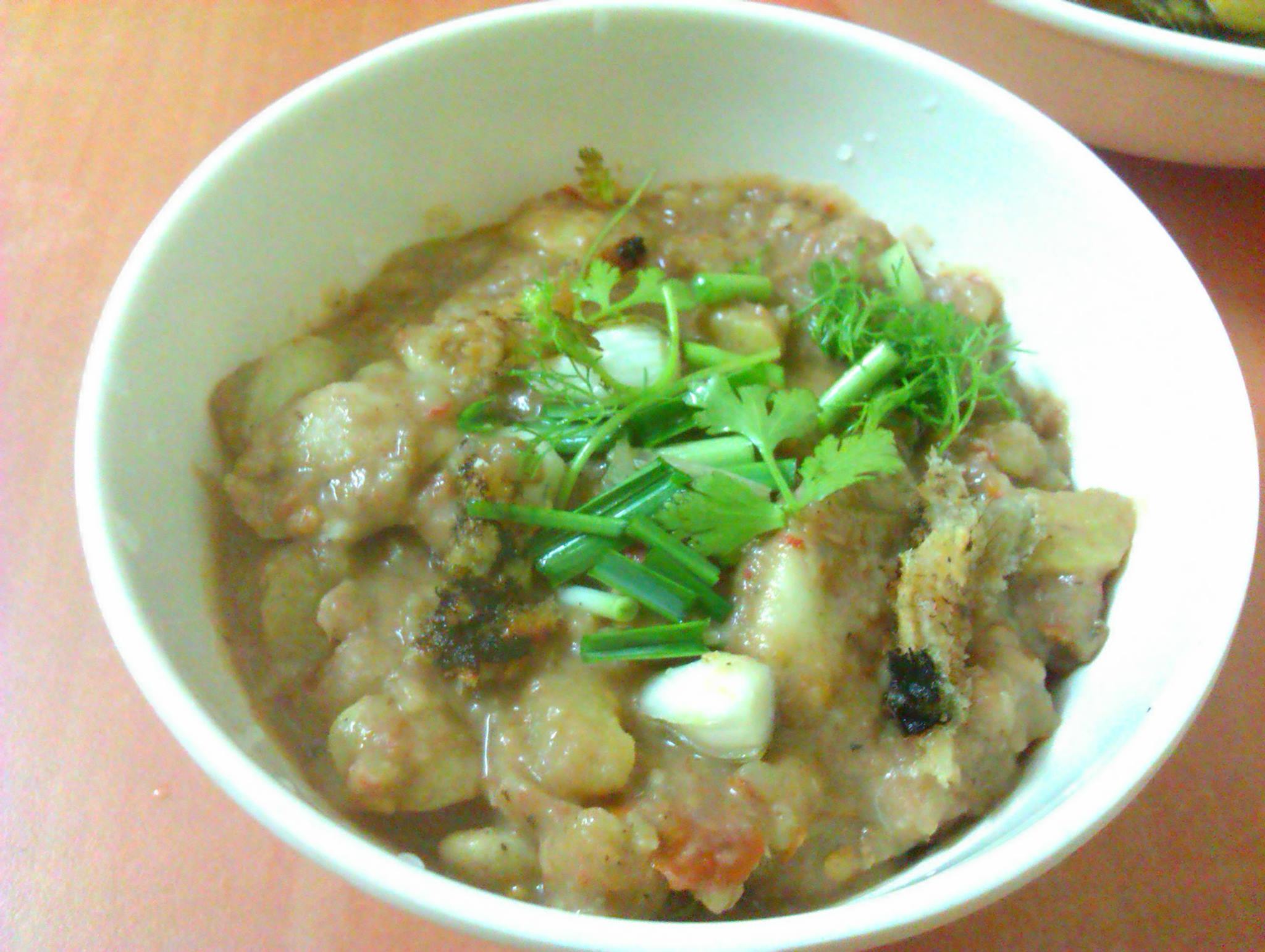



-01.JPG)



















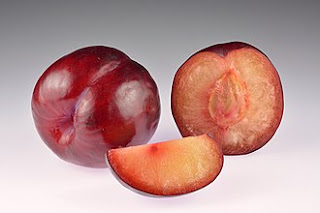
.jpeg)









.jpg)





.jpg)
.jpg)
.jpg)
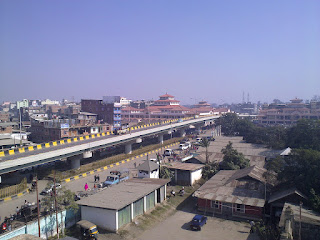

.jpg)


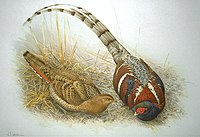
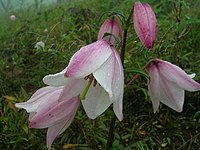



.jpg)
.jpg)

.jpg)
.jpg)




.jpg)


.jpg)















.webp)

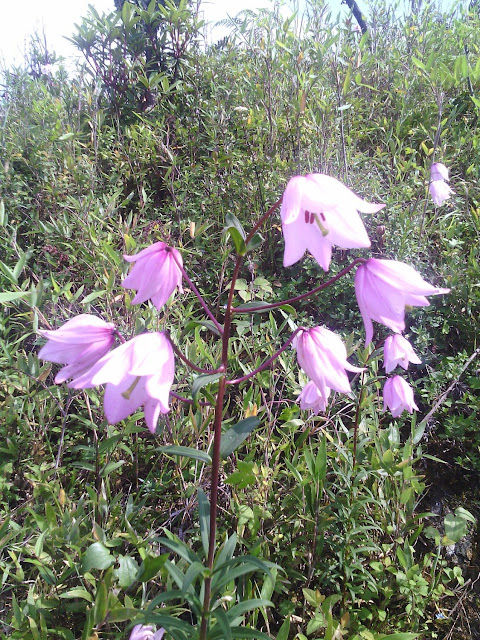





.jpg)

.jpg)







.jpg)
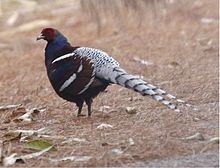



.webp)


.jpg)
.jpg)





Comments
Post a Comment